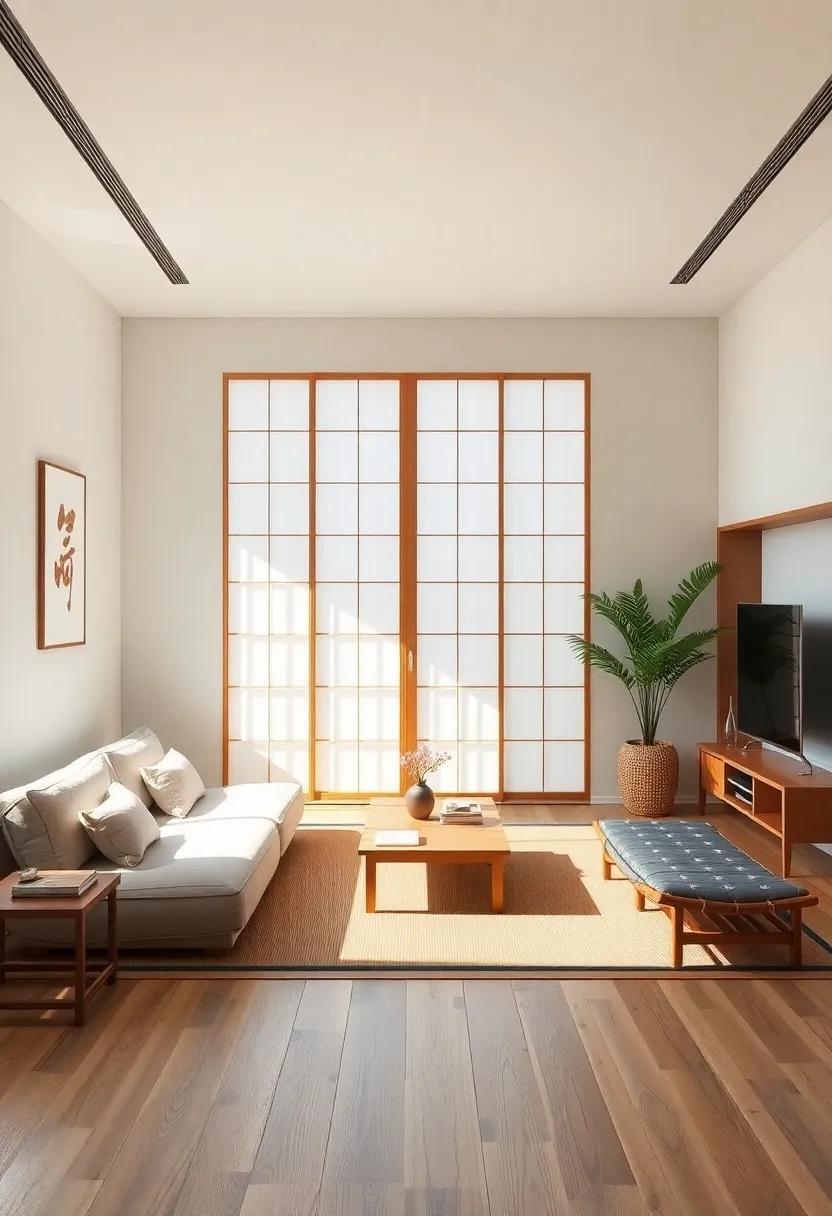In a world increasingly defined by excess and clutter, a quiet revolution is taking place within the serene spaces of Japanese living rooms. Here,the principles of minimalism come alive,not just in philosophy but in the very fabric of everyday life. At the heart of this elegant simplicity lies the futon—a timeless staple that embodies both functional design and cultural heritage. This article invites you to explore the charm of futon seating,where comfort meets style,and uncover how this traditional element can transform modern living spaces.Together, let’s delve into the harmony of minimalism and the beauty of thoughtful living, revealing how futons can inspire a more serene, uncluttered lifestyle that celebrates both form and function.
Embracing the Essence of minimalism in Japanese Living Rooms
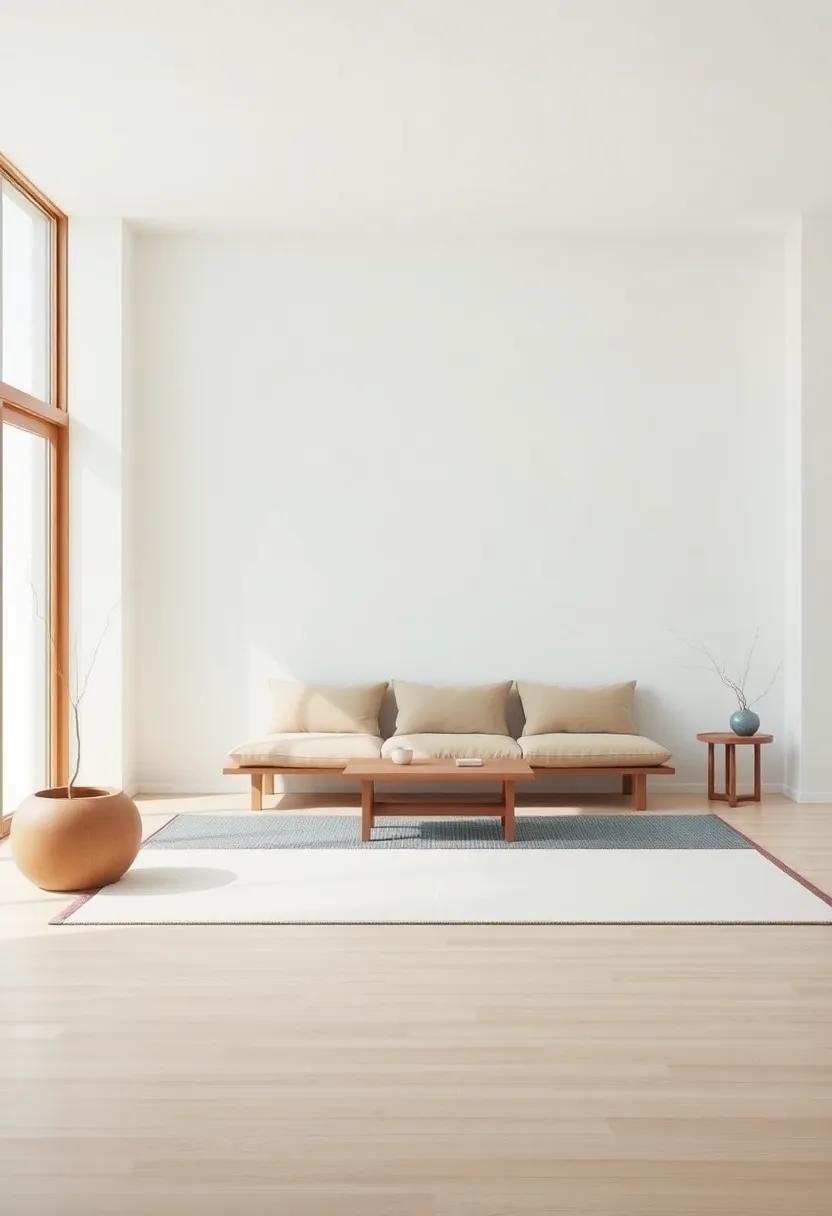
In the pursuit of tranquility and simplicity, Japanese living rooms exemplify the essence of minimalism through thoughtful design and functionality. Central to this aesthetic is the use of futons, which effortlessly blend comfort with practicality. Thier easy storage maximizes space, allowing the floor to remain clear and open during the day, promoting a sense of freedom. This flexibility enables the area to transform seamlessly from a cozy living space into an open activity area, embodying the Japanese philosophy of living harmoniously with one’s surroundings.
Additionally, the incorporation of natural materials, such as tatami mats and wood accents, enhances the organic feel of the space. To further emphasize minimalism, consider these elements:
- Neutral Color Palettes: Soft whites, muted greens, and earthy browns create a calming atmosphere.
- simple Decor: Minimal artworks or calligraphy add personality without overwhelming the senses.
- Function-Driven Furniture: Pieces that serve multiple purposes, like a low table for dining and work, reinforce practical minimalism.
By thoughtfully selecting each component, Japanese living rooms become a canvas for simplicity, inviting a serene lifestyle that values both beauty and functionality.
Futon Seating: A Harmonious Blend of Comfort and Simplicity
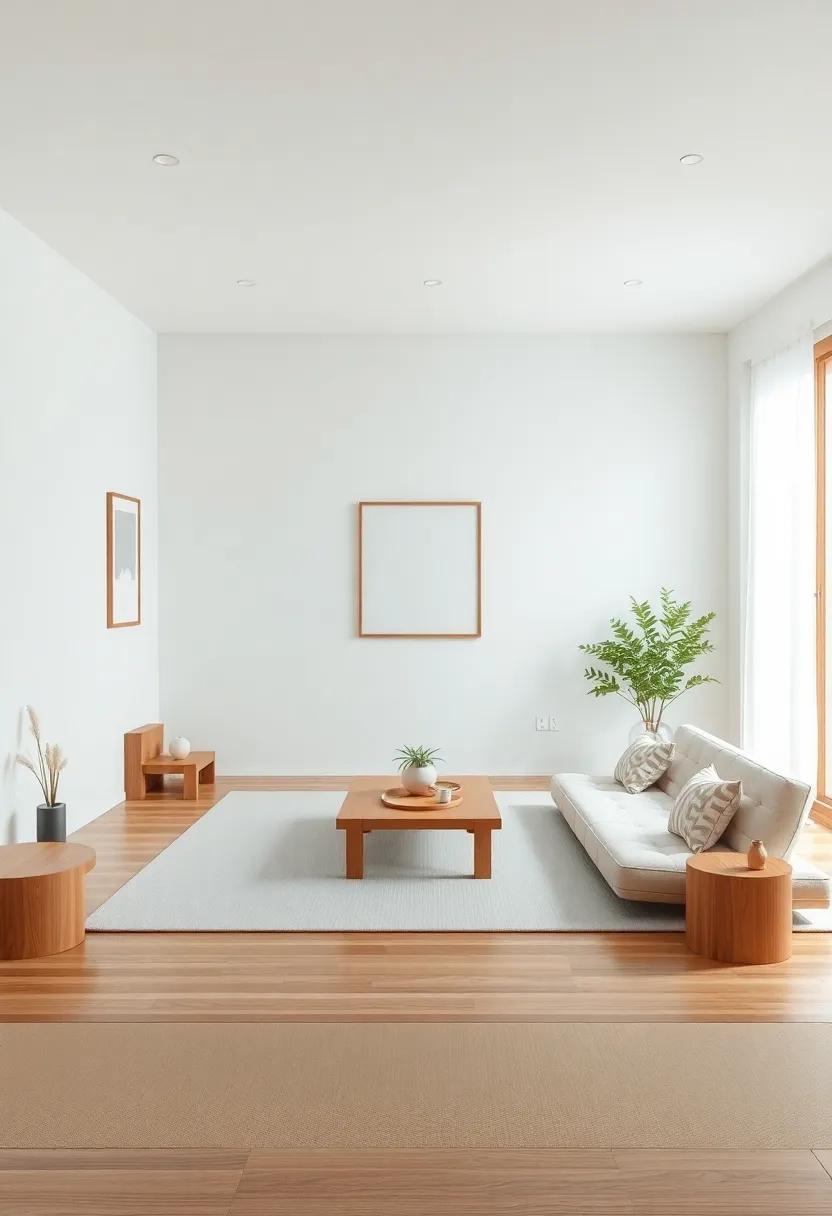
In the realm of interior design,futon seating represents a celebration of simplicity and function,merging effortlessly with the elegance of Japanese aesthetics. The beauty lies in its versatility—when not in use, futons can be easily folded and stored, thus maximizing space in the often compact living areas typical of traditional Japanese homes. This clever design choice not only preserves the clean lines and uncluttered look but also allows for a seamless transition between day and night, as the seating transforms into a cozy bed for restful slumber. the materials used in futon seating, such as soft cotton batting and breathable covers, promise a comforting touch that nudges the boundaries of coziness to the forefront of minimalistic living.
Moreover, the charm of futon seating extends beyond practicality; it encapsulates a philosophy of living that emphasizes mindfulness and tranquility. Each piece invites both residents and guests to engage in a more relaxed pace of life, encouraging moments of connection and conversation in a serene environment. When decorating with futons, consider the following ideas to enhance their appeal:
- Layered Textiles: Incorporate varied fabrics for cushions and throws to create warmth.
- Natural Elements: Add wooden elements or plants to complement the earthy feel of futon seating.
- Adjustable Lighting: Use soft lighting to foster a relaxing ambiance that accentuates the space.
The Timeless Allure of Traditional Japanese Futons
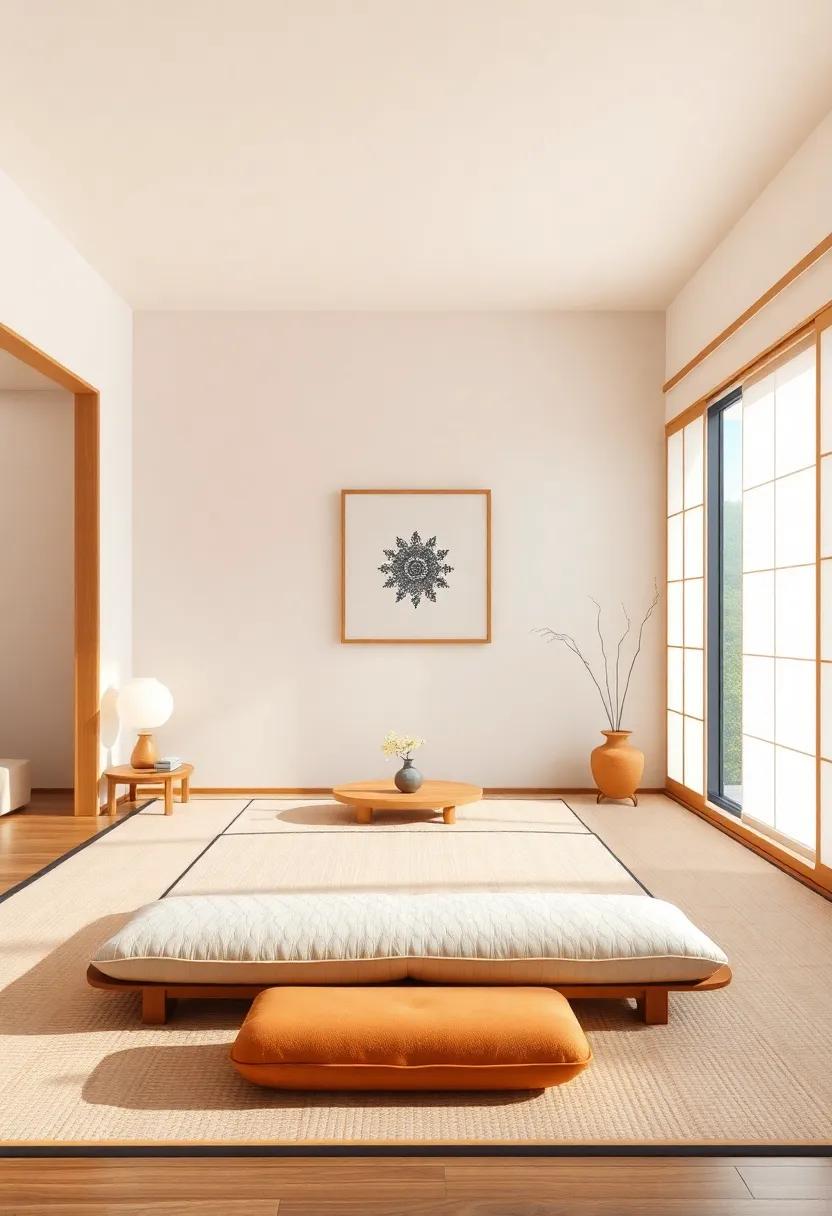
The charm of traditional Japanese futons lies not only in their practicality but also in their embodiment of simplicity and harmony with nature. Made from layers of cotton or other natural materials, these portable bedding sets allow for a minimalist lifestyle, freeing up valuable floor space when not in use. Futons promote a sense of tranquility, fostering a connection between the home and the surrounding environment. Their lightweight design and ease of storage make them an ideal choice for those who wish to embrace a lifestyle focused on functionality and serenity.
Incorporating futons into Japanese living rooms offers an inviting and versatile seating arrangement. Futon seating can adapt to various social settings, whether it’s a quiet evening with family or a gathering of friends. The adaptability of these cushions invites casual lounging or formal entertaining. Key aspects of futon seating include:
- Comfort: Soft and inviting, futons provide a cozy atmosphere.
- Versatility: Easily moved for diffrent layouts or purposes.
- Style: Available in various colors and patterns, marrying aesthetics with tradition.
To better appreciate the timeless appeal of futons, consider the following table showcasing their benefits:
| Feature | Description |
|---|---|
| Easy Storage | Folds compactly when not in use, saving space. |
| natural Materials | Made from breathable fabrics, enhancing comfort. |
| Traditional Craft | Reflects past craftsmanship and quality. |
Creating Zen spaces with Minimalist Futon Designs
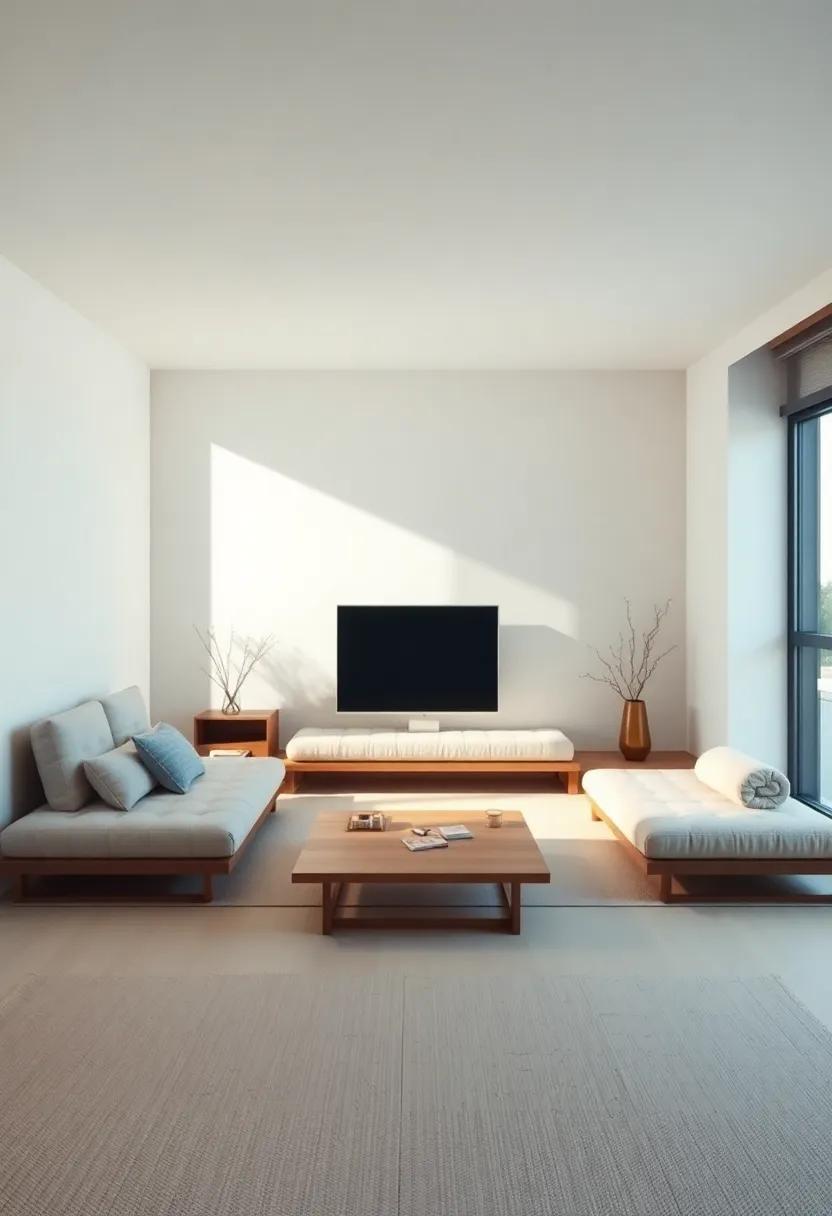
Incorporating minimalist futon designs into your living area can transform it into a serene retreat, promoting a sense of tranquility and openness. These versatile pieces not only serve as comfortable seating but also harmonize effortlessly with traditional and contemporary decor alike. The clean lines and unobtrusive styles of these futons encourage a clutter-free environment, allowing the mind to relax and focus on the present. By selecting neutral colors and natural materials, your living space can reflect a pure and calming aesthetic that resonates with zen philosophies.
To enhance the ambiance,consider layering your futon with a few carefully chosen elements that evoke a sense of calmness:
- Natural textiles: Opt for cotton or linen materials that breathe and feel inviting.
- Low-profile accessories: Incorporate cushions or throws that maintain the minimalist look while offering comfort.
- Subtle lighting: Use soft, diffused lighting to create an inviting atmosphere without overwhelming the senses.
By maintaining a focus on simplicity, the minimalist futon can become the centerpiece of an expansive zen space, inviting all who enter to relax and unwind.
transforming Small Living areas with Futon Seating Solutions
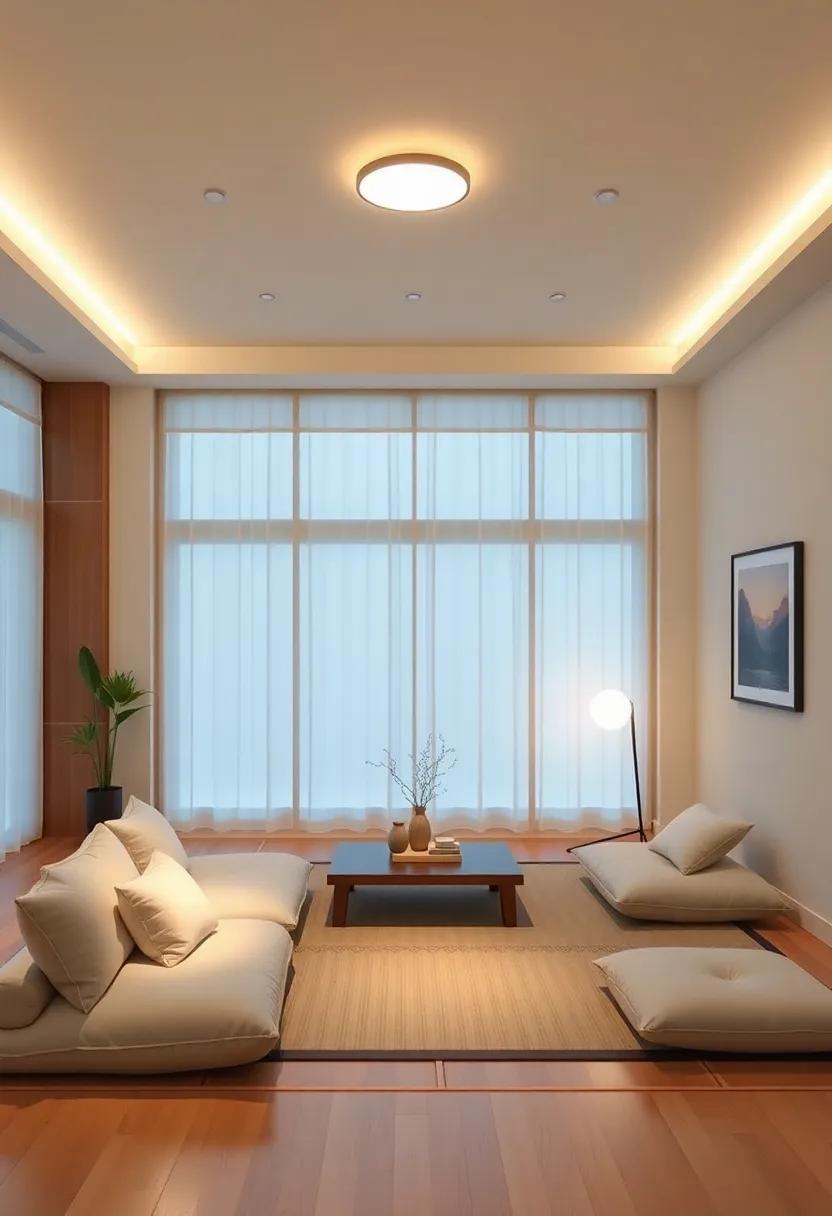
In the heart of many Japanese homes, futon seating solutions serve as an epitome of functionality and style, ideal for transforming compact spaces into cozy sanctuaries. Futons are versatile pieces that adapt easily to the ever-changing needs of a household, offering an inviting seating area during the day and a comfortable sleeping arrangement by night. By choosing futons, you can create a seamless flow in your small living areas, allowing for open pathways and the illusion of greater spaciousness. Consider incorporating these elements for a well-rounded aesthetic:
- Natural Fabrics: Opt for futons made from cotton or linen to enhance the organic feel of your space.
- Layered Textures: Use cushions and throw blankets in different materials to add warmth and depth.
- Color Palette: Stick to neutral tones or soft pastels to maintain a calm atmosphere.
Additionally, incorporating futon seating can revolutionize the dynamics of social interaction in smaller spaces. When guests arrive, simply spread out the futon to create a comfortable area for conversation and relaxation without the bulk of traditional furniture. For those who enjoy hosting, consider a modular approach where multiple futons can be aligned or rearranged as needed. A clever option is to create multi-purpose zones, as shown in the table below:
| Zone | Usage | Futon Arrangement |
|---|---|---|
| Living Area | Relaxation & Socializing | Spread out full size |
| Guest Room | Overnight Stay | Folded for sleeping |
| Reading Nook | Personal Space | Backrest style |
Incorporating Natural Textures in Futon Seating Arrangements
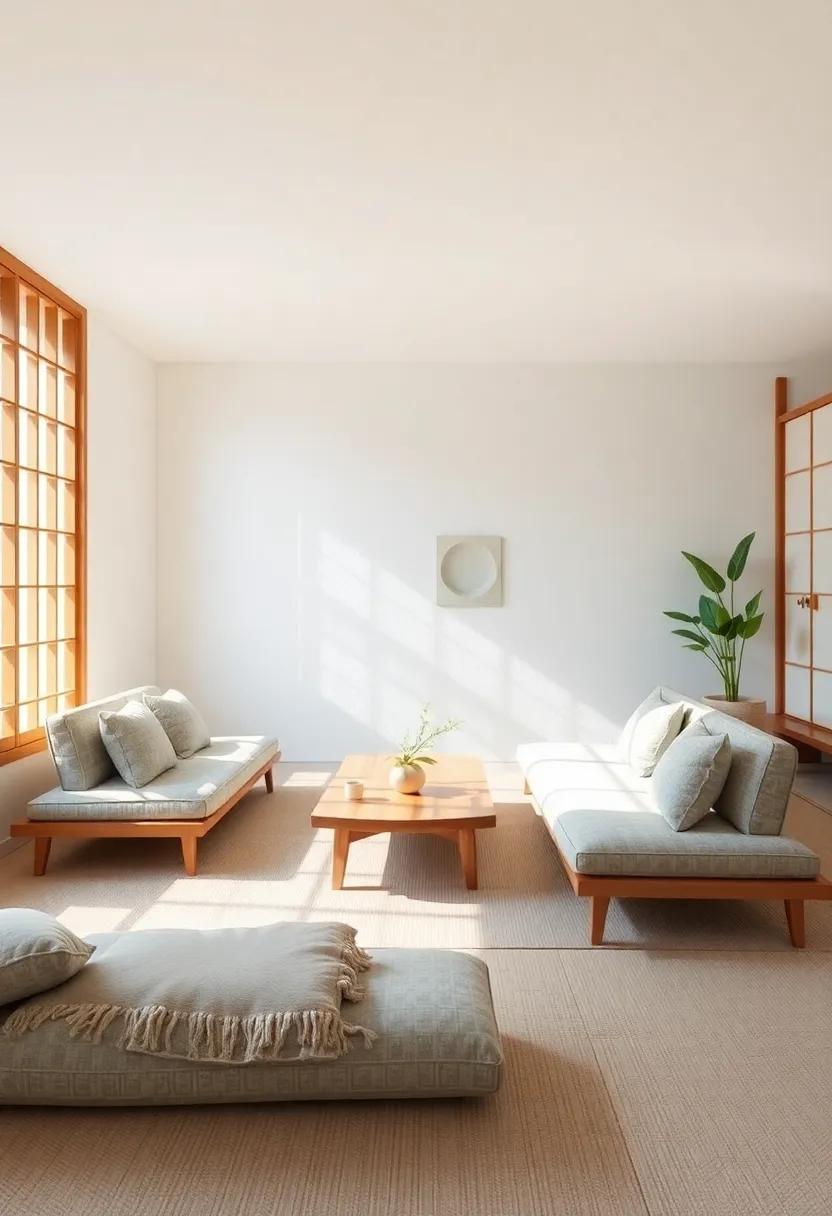
In a world increasingly dominated by synthetic materials and flashy designs, incorporating natural textures into futon seating arrangements can create a serene and inviting atmosphere within Japanese living rooms.Options like bamboo mats, woven grass, and organic cotton fabrics provide an earthy backdrop that complements the simplicity of futon seating. Layering these materials enhances the tactile experience, transforming the space into a tactile retreat that invites relaxation. For an added touch, consider using cushions crafted from linen or hemp, which not only offer comfort but also add an organic feel to the overall aesthetic.
To maintain a cohesive design, it’s essential to harmonize the colors and textures throughout the space. Use a few strategically placed elements to contrast with the futon’s minimalistic design, such as wooden side tables or stone decorative pieces. Creating a visual balance can be achieved through simple groupings, ensuring that each piece flows seamlessly into the next. below is a concise table illustrating how different natural textures can be paired with futon seating:
| Material | Suggested Pairings |
|---|---|
| Bamboo Mats | Natural Cotton Futon |
| Woven Grass | Linen Cushions |
| Organic Cotton | Wooden Side Table |
Seasonal Transformations: Futons for Every Occasion
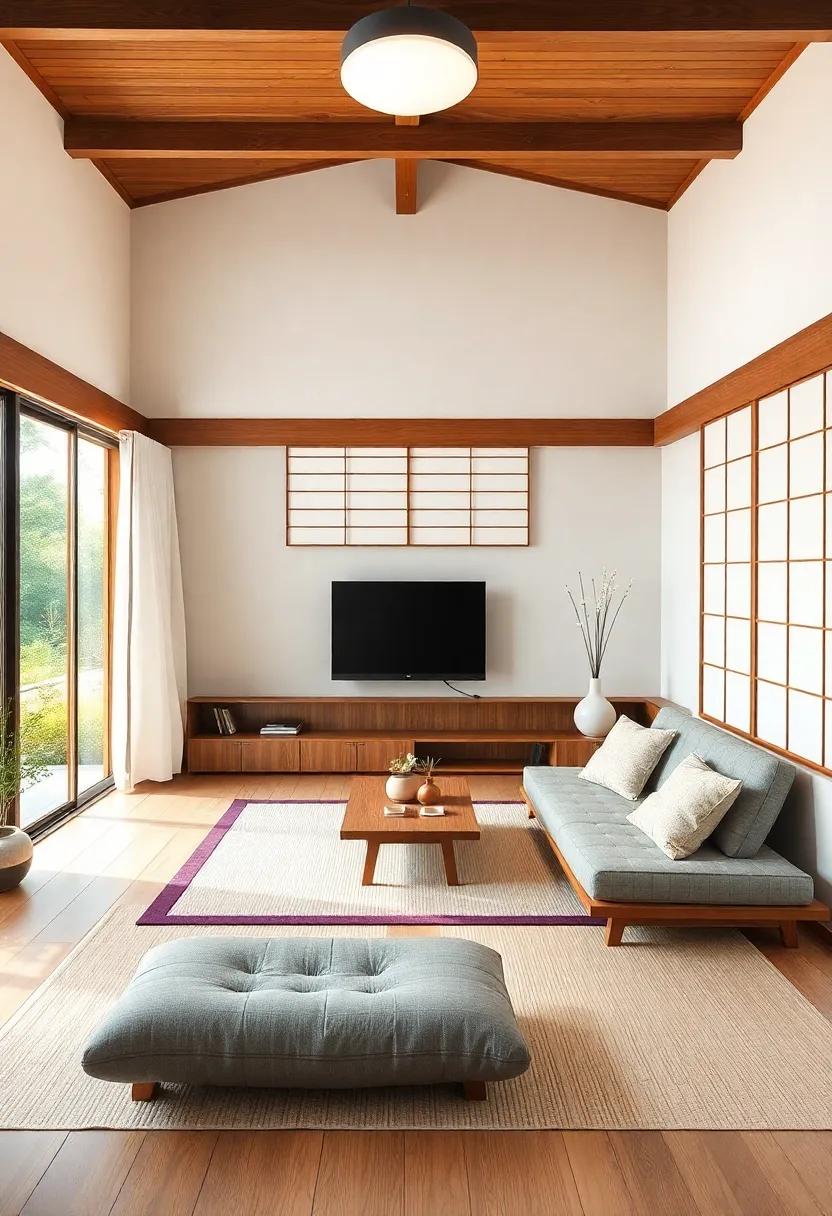
As seasons shift, so too does the aesthetic of our living spaces. Futons are not just versatile in their function but also in their ability to enhance the ambiance of your Japanese-style living room. Whether it’s the gentle hues of spring blossoms or the warm, golden tones of autumn leaves, incorporating futons allows for seamless transitions. By storing the futon away during brighter months, you can open up space for meditation or tea ceremonies, embracing the minimalistic essence that Japanese culture celebrates. When the colder months arrive, unfurl your luxurious futon to transform your living room into a cozy sanctuary, perfect for family gatherings or quiet evenings with a book.
Beyond their seasonal adaptability, futons also cater to various styles and preferences, making them suitable for any occasion. Consider the following options:
- Color Palette: Select futons in earthy tones for a subdued fall vibe, or vibrant pastels to evoke spring cheer.
- Fabric Choice: opt for heavier, textured materials in winter and lightweight cotton in summer.
- Comfort Levels: Choose between plush and firm mattresses to suit your guests for any gathering.
By pairing futons with carefully chosen decor elements, such as bamboo screens or sliding shoji doors, you can enhance their charm and transform your space effortlessly. Consider this table for a quick overview of futon styles:
| Style | Occasion | Fabric |
|---|---|---|
| Traditional Shiki Bukuro | Everyday Use | Cotton Blend |
| Luxurious Silk Futon | Special Events | silk |
| Eco-Friendly Hemp Futon | Seasonal Refresh | Hemp |
The Art of Layering: Stylish Futon Compositions
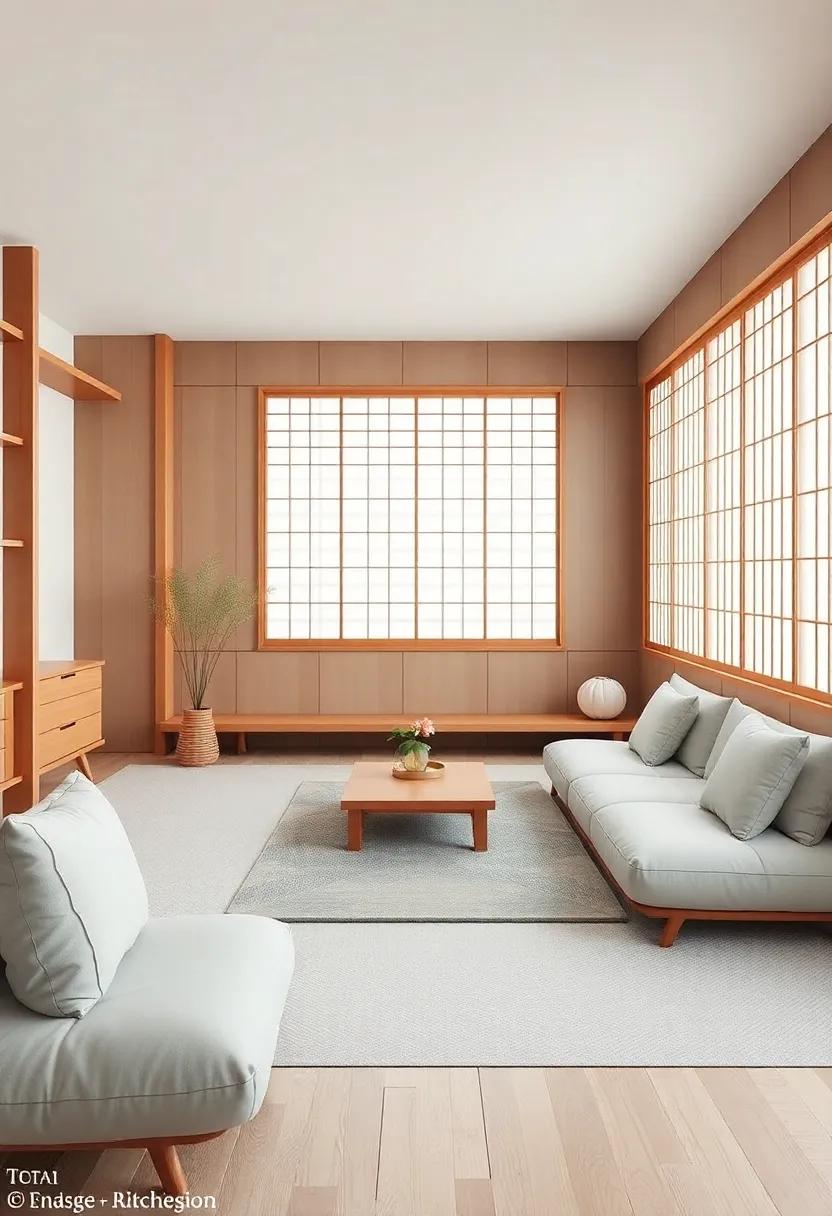
Mastering the art of layering transforms the simple futon into a multifaceted piece of living room decor. By thoughtfully combining textures, colors, and patterns, you can create a visually soothing yet inviting atmosphere. Consider these key elements when composing your futon setting:
- Textured Fabrics: Incorporate cushions made from diverse materials like linen, cotton, and velvet to add depth.
- Color Harmony: Choose a color palette that complements the walls and other furnishings,rather than competing with them.
- Functional Layers: Stack futons in a way that they can easily transition from seating to sleeping arrangements, promoting functionality.
When arranging your futons,consider these styling techniques to elevate the overall look:
| Technique | Description |
|---|---|
| Color Blocking | Use cushions of bold,contrasting colors to create an eye-catching focal point. |
| Layering Heights | Mix cushions of varying sizes to give an organic feel and to keep the composition dynamic. |
| Seasonal Changes | Refresh your futon setup with seasonal shades and patterns to keep the space feeling new. |
Utilizing Futon Seating for Multi-Functional Spaces
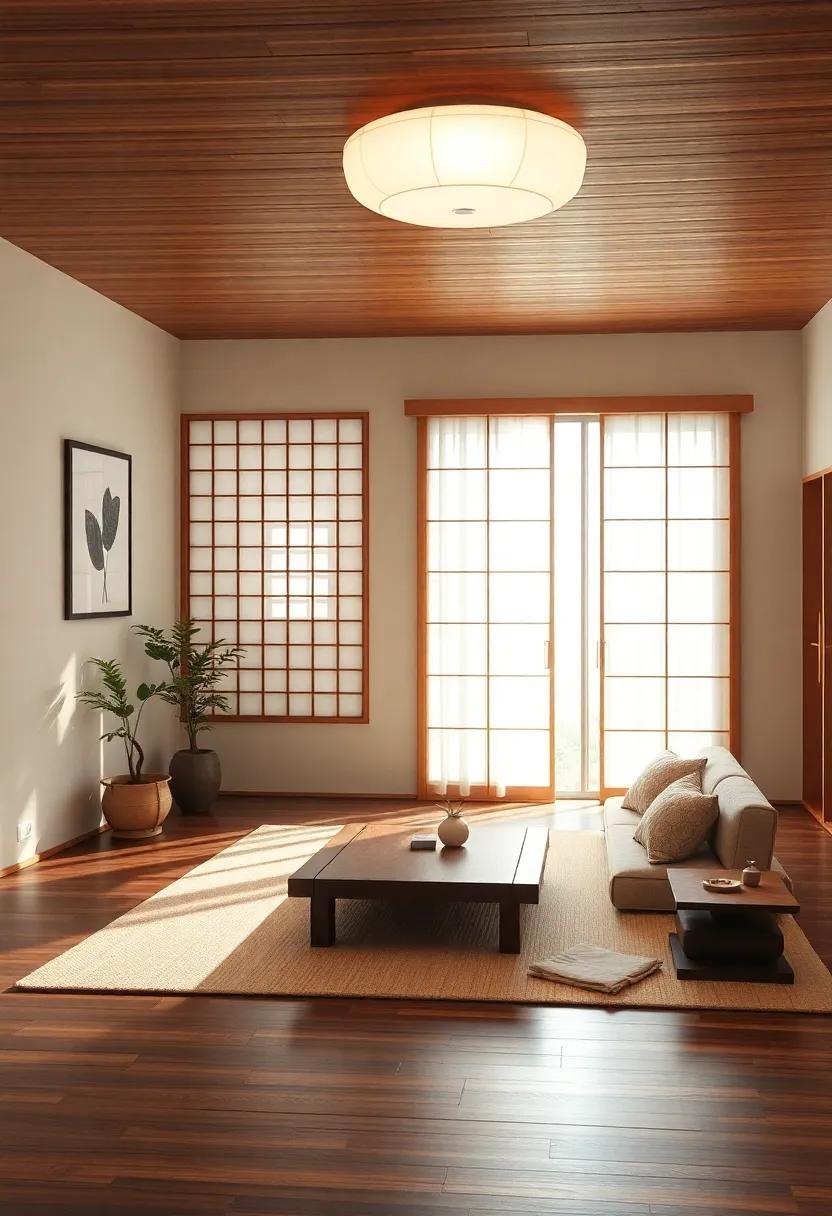
In an era where space is often at a premium, futon seating emerges as a champion of versatility, seamlessly adapting to the evolving needs of modern living. These floor-based cushions not only offer comfort and style but also transform any space into a multifunctional area. When laid flat, a futon becomes a cozy sleeping arrangement, perfect for unexpected guests or lazy Sunday afternoons. By day, it effortlessly morphs into a chic seating solution that invites relaxation and conversation, harmonizing with the minimalist aesthetic of Japanese interiors.
To maximize the utility of futon seating, consider implementing the following tips:
- Layering Textiles: Combine futons with vibrant throws and cushions to create a welcoming atmosphere.
- Storage Solutions: Utilize under-bed storage to keep bedding hidden, preserving the spaciousness of the room.
- Strategic placement: Position futons near windows or natural light for a refreshing and uplifting ambiance.
- Incorporation of Nature: Surround your futon area with indoor plants to enhance tranquility and connect with the outdoors.
| Function | Futon Use |
|---|---|
| Daytime | Chic seating for relaxation |
| Nighttime | Comfortable sleeping arrangement |
| Social Gatherings | Flexible seating for guests |
Color Palettes that Enhance the Minimalist Aesthetic
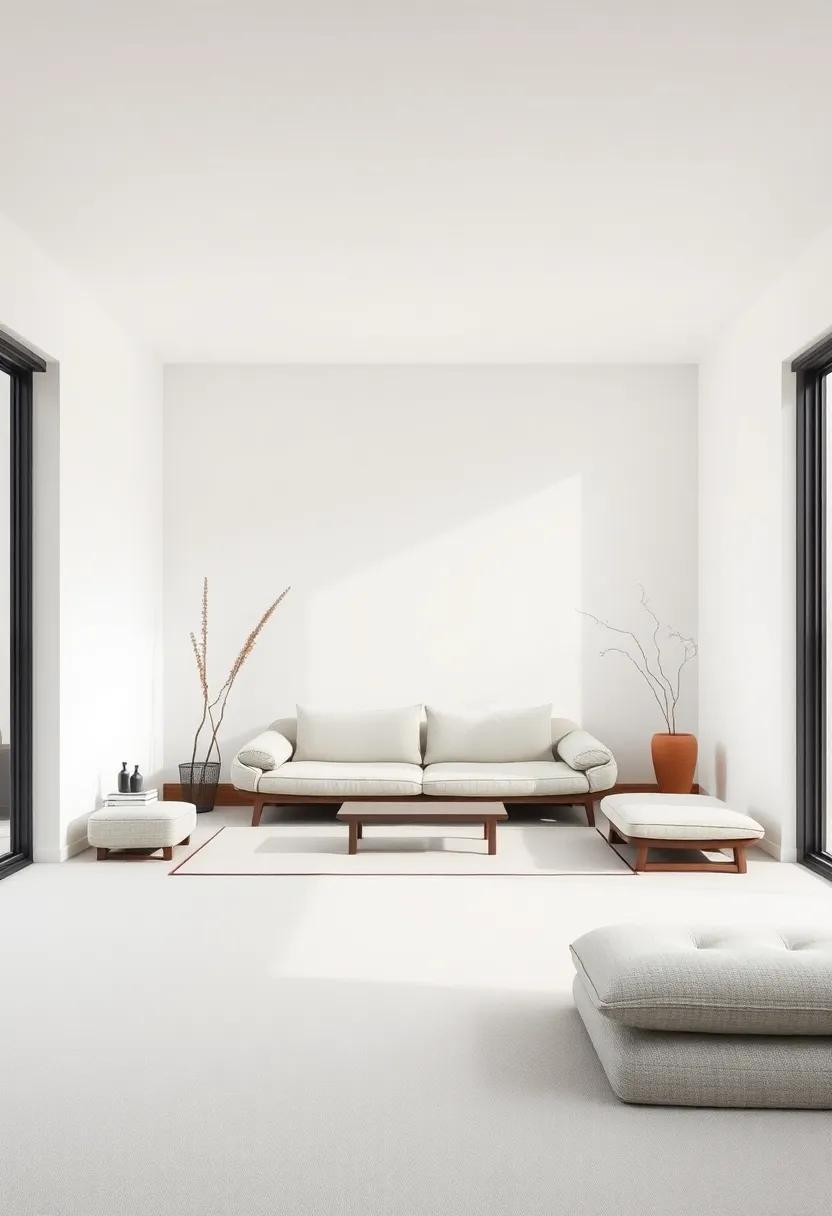
In the pursuit of a minimalist aesthetic, selecting the right color palette can evoke a sense of tranquility and openness that complements the simplicity of futon seating. Soft,neutral tones such as whites,beiges,and greys create a seamless backdrop,allowing the natural textures of fabrics and materials to shine. These shades foster a calming environment, making spaces feel larger and more inviting. To add depth and interest without overwhelming the senses, consider incorporating earthy accents like muted greens or gentle browns that connect with nature, reminiscent of traditional Japanese interiors.
Along with neutrals,bolder hues can also play a role in enhancing minimalism—when used thoughtfully. Here are some options for accent colors that can be harmoniously integrated:
- Soft Blues: Evokes serenity and pairs beautifully with natural wood tones.
- Dusty Rose: Adds a hint of warmth while maintaining a subtle charm.
- Charcoal Gray: Provides a refined contrast to lighter shades, ideal for creating focal points.
In essence, a carefully curated color palette not only enhances the aesthetic appeal of futon seating but also fosters an environment of peace and simplicity, embodying the essence of minimalism.
Pairing Futons with Japanese-Inspired Decor
The beauty of futons lies not only in their simplicity but also in their adaptability to various decor styles, especially Japanese-inspired interiors. When pairing futons with this aesthetic, consider natural materials and earthy tones that echo the tranquil essence of Japanese design. Soft beige, muted greens, and pale grays create a harmonious backdrop for a futon, inviting a sense of calmness and relaxation. Enhance your futon seating by integrating elements such as tatami mats, which serve as both a functional flooring option and a nod to traditional Japanese culture. Incorporating sliding shoji screens can further elevate the ambiance, allowing you to create flexible spaces that reflect serenity and minimalism.
Along with textiles and flooring, accessorizing your futon seating with thoughtfully chosen decor items can beautifully complement the overall look.Consider adding a low, wooden coffee table made from reclaimed wood, which pairs exquisitely with the soft aesthetic of a futon. Here are some decor options to include:
- Woven bamboo baskets for storage
- Zen-inspired plants, like bonsais or succulents
- Simple, hand-crafted ceramics for tableware
By selecting these decor items, you will create a cohesive design that not only showcases the futon but also embraces the tranquil spirit of a Japanese living space. The result will be an inviting, clutter-free environment where simplicity reigns and comfort is paramount.
Illuminating the Ambience: Lighting Ideas for Futon Areas
Creating an inviting atmosphere in a futon area hinges on the right lighting. Soft, warm lights can envelop the space in a calming glow, making it perfect for relaxation or social gatherings. Consider using floor lamps with dimmable features to adjust the intensity based on the time of day or activity. Wall sconces with adjustable arms can also provide versatility, allowing you to focus light where it’s needed while keeping the overall aesthetic minimalistic. To enhance the Japanese aesthetic, opt for paper lanterns or hanging pendant lights that mimic traditional designs. These fixtures not only provide illumination but also add a layer of cultural charm.
Incorporating natural elements into your lighting choice further enriches the ambience. here are a few suggestions to harmonize your futon area with its surroundings:
- Use bamboo lamps that reflect a rustic yet elegant vibe.
- Add LED candles for a flickering effect, simulating the charm of traditional candlelight.
- Incorporate fairy lights entwined with natural branches to create a whimsical touch.
if you prefer a more structured approach,utilizing a well-arranged lighting plan can significantly impact the feel of your space. below is a simple table to help you choose the ideal lighting elements:
| Lighting Type | Best for |
|---|---|
| Floor lamps | Reading,relaxing |
| Wall Sconces | Accent Lighting |
| Paper Lanterns | Ambient Warmth |
| Bamboo Lamps | Natural Style |
Enhancing Comfort: Cushions and Throws for Futon Seating
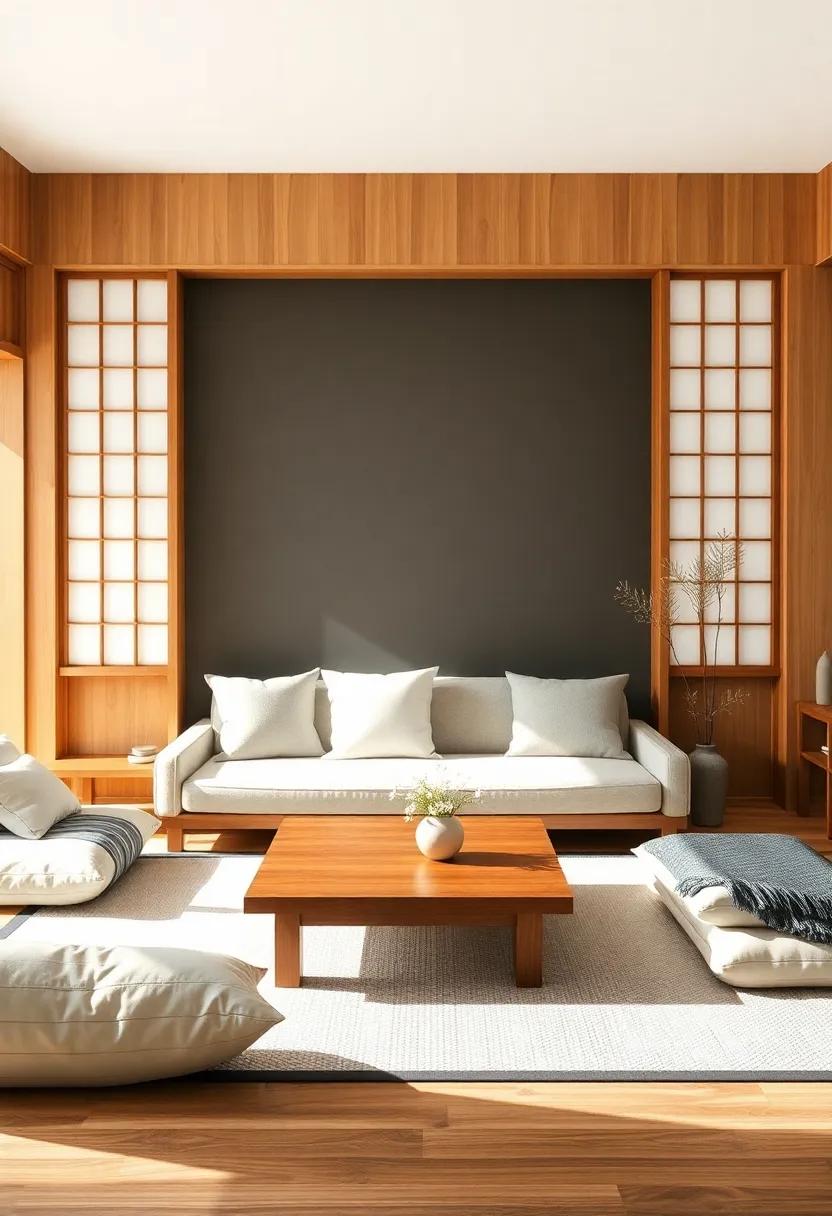
Transforming your futon seating into a cozy haven is all about the right accessories. Cushions and throws not only enhance comfort but also add a splash of personality to your living space. Consider vibrant colors or intricate patterns that echo the beauty of nature found in Japanese aesthetics. Layering different textures can create an inviting visual appeal while promoting relaxation. Think soft cotton or linen for throws that are lightly draped over the futon, and choose cushions with varying thicknesses to allow for both support and sink-in softness.
Incorporating carefully selected items into your futon setup can make a significant difference. Here are a few suggestions to elevate your comfort:
- Neck Rolls: Perfectly supportive for lounging.
- Square Cushions: Great for back support while sitting.
- Textured Throws: Offer warmth and a cozy feel during colder months.
you might also consider a harmonious color palette that complements your existing decor. Below is a simple guide to help you mix and match:
| Color | Suggested Cushion | Complementary Throw |
|---|---|---|
| Natural Beige | soft Cotton | Textured Knit |
| deep Indigo | Patterned Velvet | Lightweight Weave |
| Warm Terracotta | Round Pouf | Chunky Crochet |
By thoughtfully integrating these elements, your futon can transform into a versatile space that reflects both minimalism and comfort, allowing you to fully embrace the tranquility of Japanese living.
Sustainable Living: Choosing Eco-friendly Futons
when selecting a futon for your home, embracing a sustainable lifestyle means looking beyond aesthetics. Opting for eco-friendly materials is crucial in reducing your carbon footprint. Look for futons made with organic cotton, which is grown without harmful pesticides or chemicals. Choosing natural latex instead of synthetic foams not only enhances comfort but also ensures that you are supporting sustainable farming practices. Additionally, consider futons that use recycled or repurposed materials in their construction, which minimizes waste and resource consumption.
It’s also significant to understand the production processes behind your futon.Brands that practice ethical manufacturing are often committed to fair labor practices and environmentally friendly methods. Look for certifications such as GOTS (Global Organic Textile Standard) to ensure the futon meets rigorous sustainability standards. You might even want to explore local artisans who create handcrafted futons, as this directly supports your community while also reducing the environmental impact of shipping. Here’s a quick reference table of some key eco-friendly futon features and their benefits:
| Feature | Benefit |
|---|---|
| Organic Cotton | Free from harmful chemicals and pesticides |
| Natural Latex | Biodegradable and sustainable option to synthetic foams |
| Recycled Materials | Reduces waste and promotes resource conservation |
| Ethical Manufacturing | Supports fair labor practices and eco-friendly practices |
Futon Seating for Cozy Reading Nooks in Japanese homes
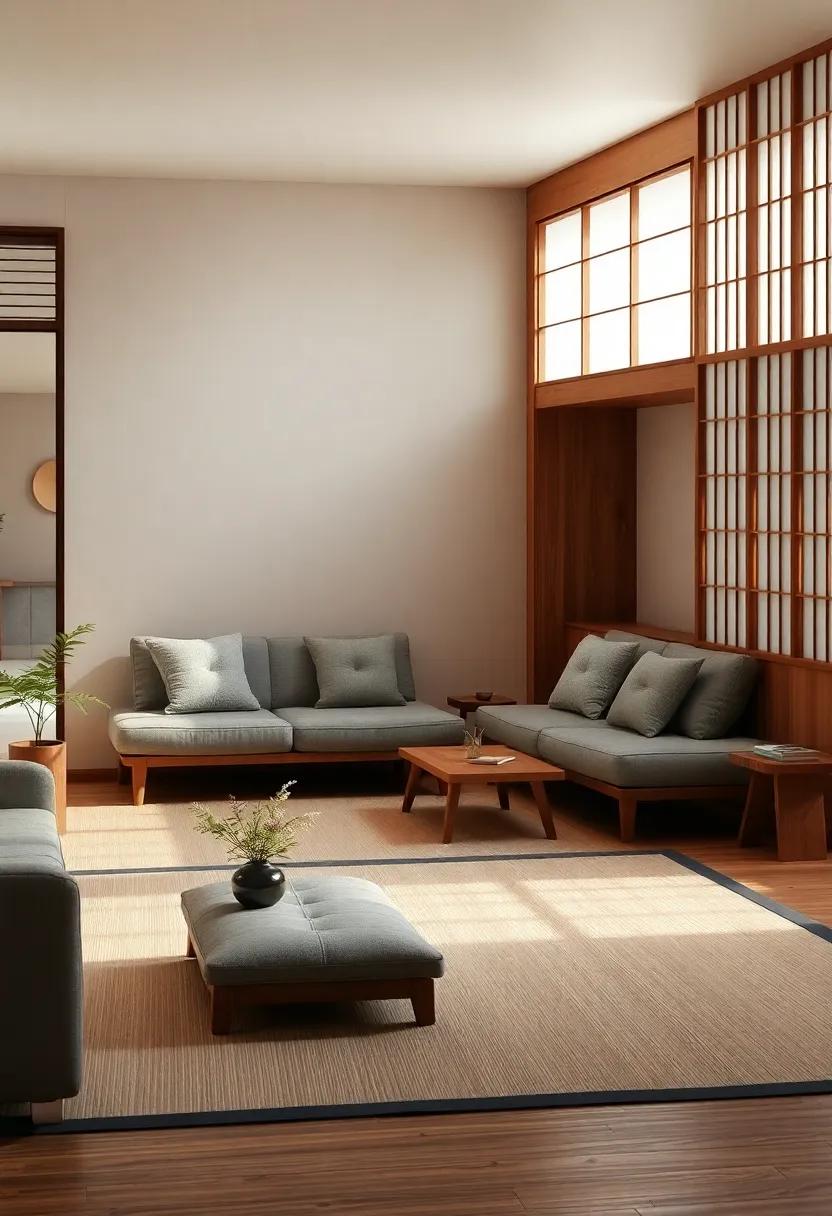
In Japanese homes, the aesthetic of simplicity is beautifully exemplified through the use of futon seating, creating inviting spaces perfect for indulging in a good book. This versatile seating option not only enhances comfort but also encourages a connection with the surrounding environment, blending seamlessly with traditional tatami flooring. The soft, foldable nature of futons allows for easy reconfiguration of living spaces, inviting a sense of warmth that encourages relaxation. Whether tucked into a corner or spread out on the floor, futon seating fosters an intimate atmosphere, perfect for quiet reading moments.
The charm of futon seating extends beyond its practicality; it also contributes to a minimalist lifestyle that Japanese culture embraces. Key features include:
- Space-saving design: Easily stored away when not in use, futons maximize living space.
- Natural materials: Frequently enough made from cotton or other organic fabrics, they’re eco-friendly and breathable.
- Personal customization: Available in various colors and patterns, they allow for individual expression.
This unique combination of aesthetics and functionality not only creates cozy reading nooks but also imbues the home with a serene ambiance, encouraging moments of reflection and tranquility.
Nurturing Connection through Collectively Designed Spaces
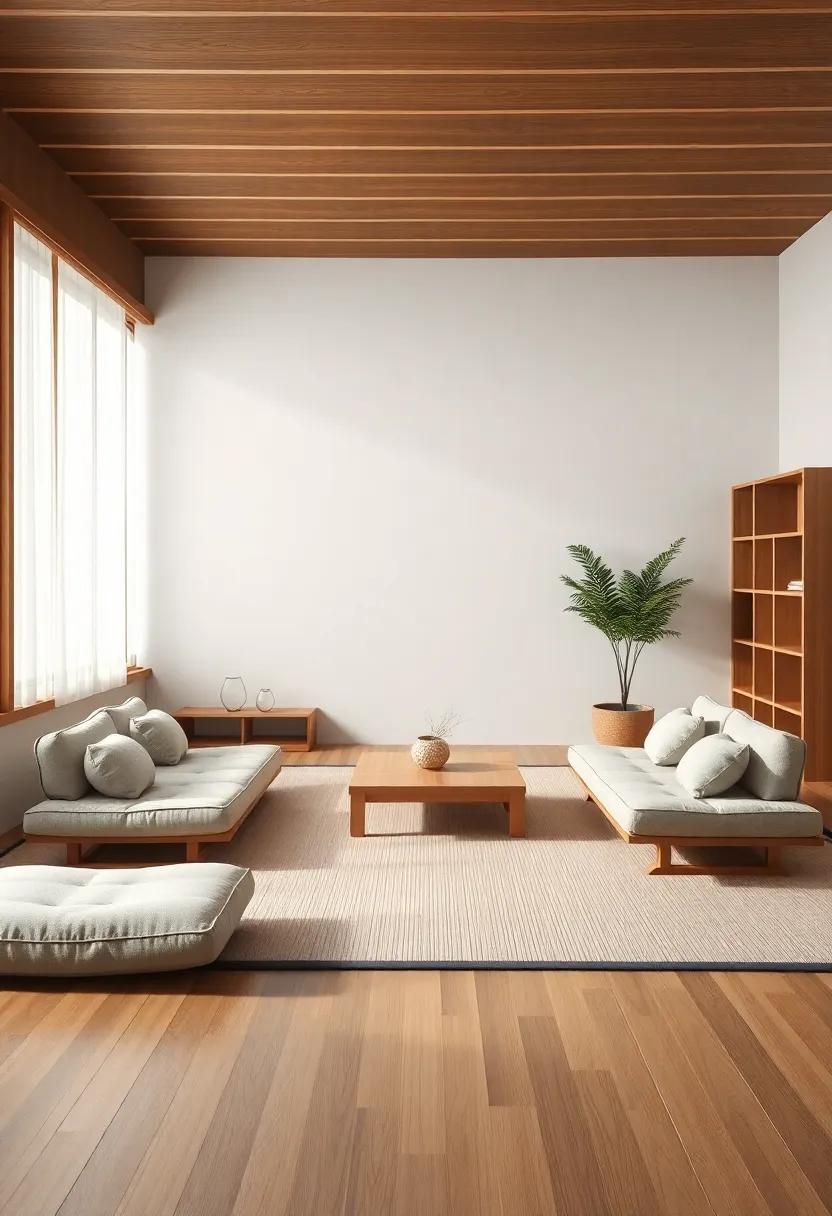
It is indeed interesting how the simplicity of futon seating fosters a deeper sense of community and connection among those who gather in japanese living rooms. These versatile pieces of furniture not only serve as practical seating but also symbolize a lifestyle steeped in mindfulness and shared experiences. The low profile of a futon invites everyone to come together, encouraging conversations that flow freely and organically, while embedding a sense of equality among guests. In this intimate layout, individuals can sit comfortably on soft tatami mats, allowing the natural flow of the home to create a nurturing atmosphere for bonding and connection.
Moreover, the act of collectively designing these spaces enhances the emotional ties within a household. When families choose or adapt elements of their living room,such as the placement of futons or the surrounding decor,it strengthens their shared identity and values. This collaborative effort often leads to the creation of an environment that is both functional and harmonious. Elements that could contribute to this aesthetic include:
- Natural materials – Integrating bamboo and wood for an earthy touch.
- Soft textiles – Using layered throw blankets and cushions for added comfort.
- Simplicity in decor – Incorporating minimalistic art that resonates with personal stories.
These thoughtfully curated elements remind us that a home is more than just a physical space; it is a reflection of the relationships and connections that thrive within it.
The Role of Futon Seating in japanese Hospitality Traditions
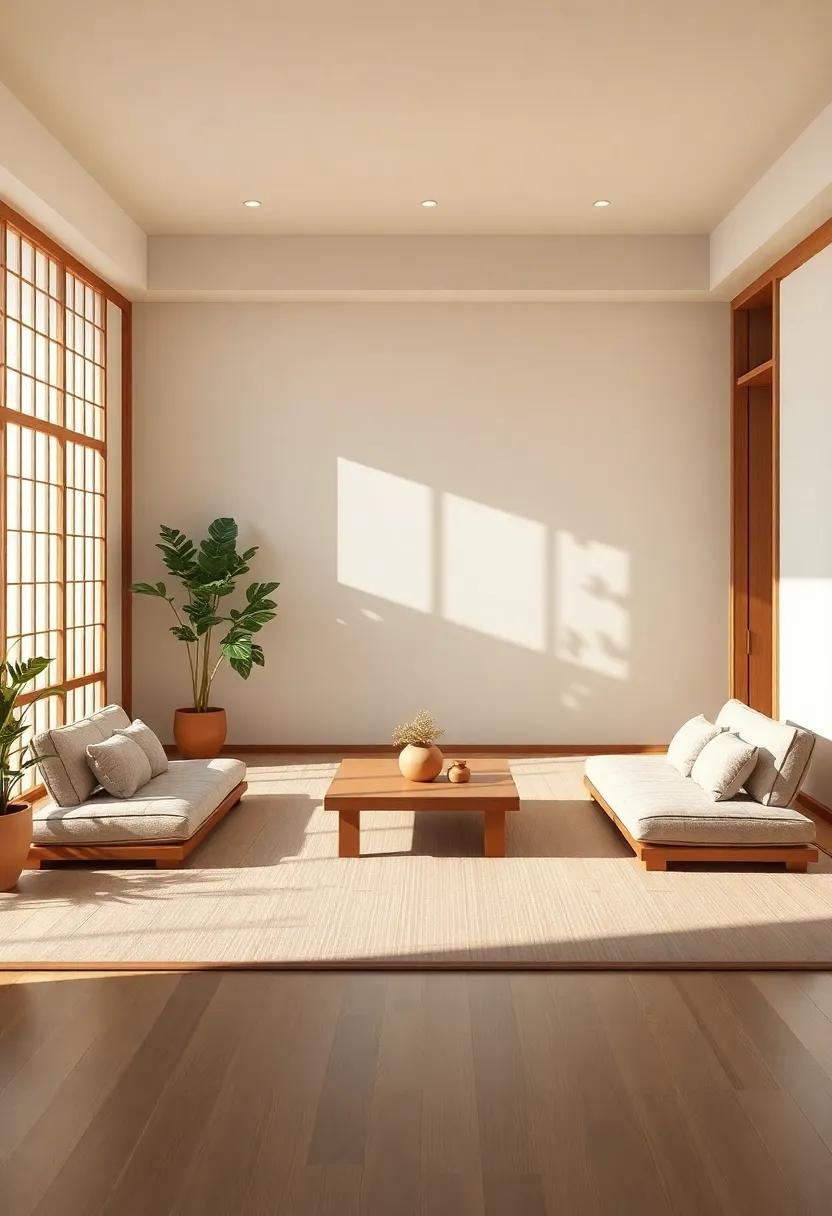
Futon seating is not merely a functional choice in Japanese households; it also embodies the deep-seated cultural values that underline Japanese hospitality. When welcoming guests, the use of futons signifies a commitment to comfort and simplicity, key tenets of the Japanese way of life. Traditionally laid out on tatami mats, these versatile sleeping mats transform quickly into cozy seating arrangements, creating an inviting atmosphere that encourages conversation and connection. The act of unrolling a futon is a ritual in itself, symbolizing warmth and a sense of openness to visitors, thereby enhancing the overall sense of community.
The aesthetic of futon seating aligns seamlessly with the principles of minimalism that permeate Japanese design philosophy. This simplicity is celebrated through the use of neutral colors and natural materials, which evoke a sense of calmness and tranquility. Moreover, the easy adaptability of futon seating allows spaces to be reconfigured effortlessly, making room for more social gatherings or intimate moments.In this context,the futon becomes not just a part of the furniture,but an integral element of the hospitality experience,where guests feel more at home and valued. Here are a few characteristics that reinforce this connection:
- Space Efficiency: Allows for flexible use of living areas.
- Comfort: Soft and inviting,encouraging relaxation.
- Tradition: Rooted in centuries-old customs of welcoming guests.
Designing intimate Gatherings with Futon Arrangements
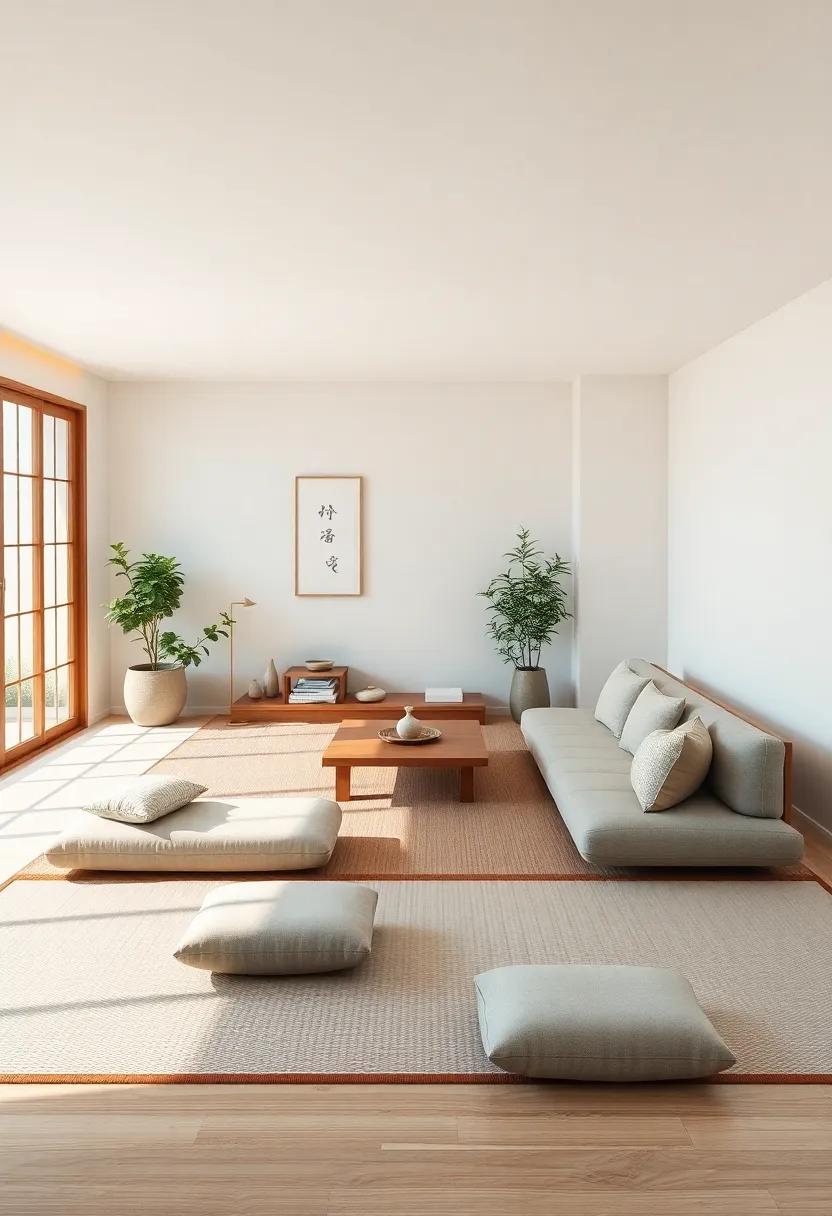
Creating cozy and intimate gatherings is an art, especially when utilizing futon seating arrangements. The flexibility of futons allows for effortless change of a living space, inviting friends and family to relax and connect on a level that traditional furniture might not offer. Futons can be layered with soft cushions and throws, enhancing comfort while maintaining a minimalist aesthetic. To make the most of your space, consider the following elements:
- layering Textiles: Combine different fabrics and colors to create a warm and inviting atmosphere.
- different Heights: Arrange futons at varying heights to encourage a dynamic flow within the gathering.
- Low Lighting: Use lanterns or string lights to set a peaceful mood, perfect for soft conversations.
Moreover, futons are highly versatile. They can be quickly arranged for various purposes—from casual lounging to impromptu dining. A simple futon setup invites a sense of togetherness and encourages interaction. Consider a layout designed for conversations,where guests can face each other comfortably,creating an inviting circle. An easy way to visualize space usage is through a layout example:
| layout Type | Description |
|---|---|
| Circle | Encourages group interaction and engagement. |
| U-Shape | Fosters discussion while providing comfort. |
| Segmented | Creates private spaces for smaller conversations. |
Concluding Remarks
As we step back from the serene allure of minimalist living, it becomes clear that futon seating is not merely a practical choice but a celebration of simplicity, comfort, and cultural richness. The soft, inviting fold of a futon invites both relaxation and connection—a reminder that our living spaces can reflect our values and aspirations. In a world often cluttered with excess, embracing the charm of futon seating encourages us to slow down, to savor the moments we share in our homes.
Whether you’re reimagining a small Tokyo apartment or seeking a fresh viewpoint in a bustling urban environment, the principles of minimalism resonate universally. By inviting futon seating into our lives, we can cultivate spaces that foster mindfulness, creativity, and harmony. Ultimately, the journey toward minimalism invites us to discover beauty in the uncomplicated, transforming our living rooms into sanctuaries that are as functional as they are poetic. So, as you ponder your own space, consider the transformative power of a simple futon—where every fold holds the promise of peace and every moment spent on it is indeed an prospect to embrace life’s quieter pleasures.
